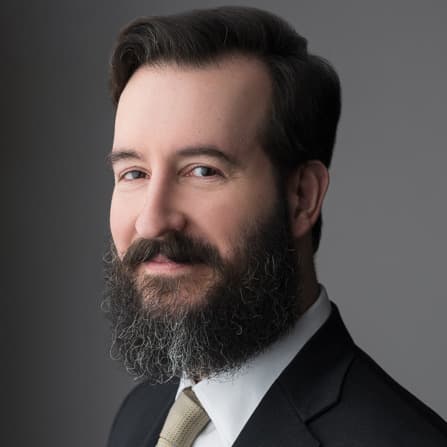The Election of Pope Leo XIV
The election of Pope Leo XIV, formerly Cardinal Robert Francis Prevost, marks a significant moment in the Catholic Church's history. As the first American-born pontiff, his ascension follows the established canonical procedures that have evolved over centuries. And like with secular societies, the Roman Catholic Church is also governed by rules and regulations – often much older than secular law.
The Legal Foundation for Papal Elections
Code of Canon Law
The current universal law of the Roman Catholic Church is found in the Codex Iuris Canonici (CIC), promulgated in 1983 and most recently updated in parts. Several canons are especially relevant:
- Canon 332 §1: A pope is elected validly when a duly chosen candidate freely accepts the election and, if not already a bishop, is immediately consecrated.
- Canon 349: The College of Cardinals is tasked with electing the pope. They are regarded as the principal advisors to the pontiff and operate under his authority even in sede vacante (when the papacy is vacant).
- Canon 335: During the vacancy of the Apostolic See, no innovation is to be made in governance. The College may handle only ordinary affairs.
Apostolic Constitution Universi Dominici Gregis
Pope John Paul II's 1996 apostolic constitution Universi Dominici Gregis (UDG) is the primary legal instrument governing papal elections today. Its most important features include:
- Eligibility to Vote: Cardinals under 80 years of age at the time of the pope’s death or resignation are the only ones eligible to vote (UDG, §33).
- Eligibility to Be Elected: Any baptized male Catholic may be elected pope, though in practice and by tradition, the electee is chosen from the College of Cardinals (UDG, §88).
- Conclave Secrecy: Absolute secrecy is required. Communication with the outside world is forbidden, and breaking secrecy carries automatic excommunication (UDG, §§55–61).
- Balloting: Elections proceed through secret ballots. Up to four ballots are held each day after the initial day, and a two-thirds majority is necessary (UDG, §62).
- Announcement: Upon acceptance, the cardinal protodeacon declares the Habemus Papam (“We have a Pope”) from the balcony of St. Peter’s Basilica, after which the new pope imparts his first apostolic blessing.
Penalties for Interference
UDG and canon law strictly forbid outside interference:
- Canon 1371 & UDG §81: Any political maneuvering or vote-buying is penalized.
- Canon 1382 (repealed and replaced, but formerly) concerned illicit ordinations—relevant if a non-bishop were elected and consecrated without proper mandate.
The Conclave Process in 2025
The conclave began following the death of Pope Francis in April 2025. In accordance with Universi Dominici Gregis and canons cited above:
- The College of Cardinals entered conclave on May 7, 2025, following the nine days of official mourning (novemdiales).
- Security and communications lockdowns were implemented per UDG §§43–44.
- After several scrutinies (voting rounds), Cardinal Prevost was elected and accepted the papacy, taking the name Leo XIV—the first use of that name since Pope Leo XIII (1878–1903).
Upon his acceptance, Canon 332 §1 confirms that he immediately assumed full papal authority as he was already a bishop. No further consecration was needed.
Theological and Ecclesiological Dimensions
While much of the legal framework is procedural, it is grounded in deeper ecclesiological principles:
- Petrine Succession: The pope is the successor to St. Peter (cf. Lumen Gentium, §22). This is not merely symbolic—juridically, the pope possesses suprema potestas (supreme power) over the universal Church (Canon 331).
- Episcopal Collegiality: The College of Cardinals is not a governing body per se but operates as a collective discernment body during sede vacante.
- Unicity of the Papacy: Only one legitimate pope can exist at a time. The new pope assumes universal jurisdiction immediately, affirming the unity and continuity of the Church.
Resignation or Death of a Pope: Legal Implications
- Canon 332 §2: A pope can resign validly, as was the case with Benedict XVI in 2013. The resignation must be made freely and properly manifested but need not be accepted by any authority.
In the case of death, as occurred in April 2025, the Camerlengo (Cardinal Chamberlain) assumes temporary administrative duties. This office was responsible for verifying Pope Francis’s death and initiating conclave preparations.
Post-Election Responsibilities and Legal Authority
Once elected:
- The pope has legislative, executive, and judicial power over the Church (Canon 333 §1).
- He can amend canon law, appoint bishops, convene councils, and establish or suppress religious orders.
- No appeal or recourse exists against papal decisions (Canon 1404: Prima Sedes a nemine iudicatur – “The First See is judged by no one”).
Ecclesial Significance
Pope Leo XIV’s election marks not only a personal milestone but also a textbook application of a deeply codified and spiritually significant legal system. The body of canon law and apostolic constitutions guiding the process ensures continuity, fidelity to tradition, and the autonomy of the Church in selecting its supreme shepherd. While much focus lies on the man elected, the enduring framework of ecclesial law silently structures one of the world’s most watched and theologically profound successions of leadership.

